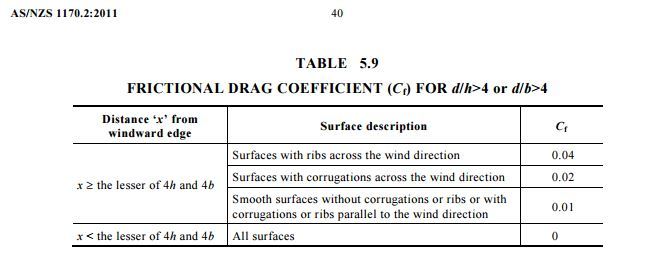PostFrameSE
Structural
- Sep 5, 2007
- 174
Is there a way know how much load should be applied to parallel-to-wind surfaces of a building system when the cladding is corrugated metal? My question specifically relates to wind acting parallel with the ridge of a building. The load has to be more than the wind pressure acting on the cross-sectional width of the building I believe, but not sure how to consider that. Does anybody know how something like that can be figured? Is it some "surface roughness" characteristics that can or should be considered? Is there a ratio of cross-sectional endwall area to length of building that could be utilized?
And then................what if the sidewalls of the building are open? How does wing load hitting the webs and chords of trusses impact the overall lateral loading on a building? To sum up the surface area of every truss in the building and apply load over that area seems overkill as no doubt there would be lots of turbulence created as wind would rush through the trusses. Not sure how to think about that either.
Any thoughts would be appreciated.
And then................what if the sidewalls of the building are open? How does wing load hitting the webs and chords of trusses impact the overall lateral loading on a building? To sum up the surface area of every truss in the building and apply load over that area seems overkill as no doubt there would be lots of turbulence created as wind would rush through the trusses. Not sure how to think about that either.
Any thoughts would be appreciated.

![[bigsmile] [bigsmile] [bigsmile]](/data/assets/smilies/bigsmile.gif)


